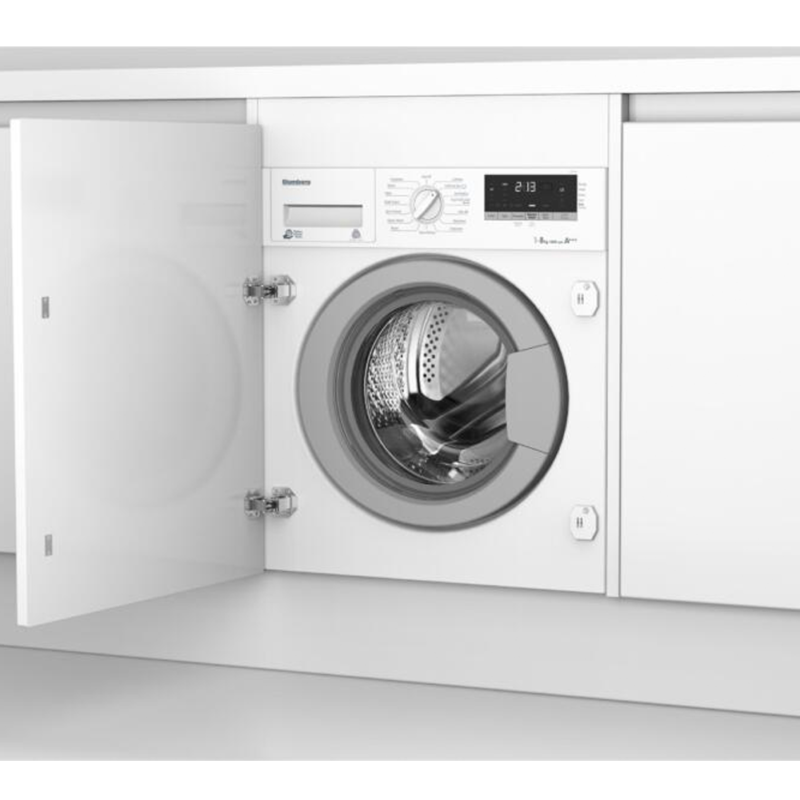Finding clothes stuck in your washing machine can be a frustrating experience. Whether a sleeve gets caught in the door seal or a string tangles around the agitator, these issues can disrupt your laundry routine and potentially damage both your clothes and the machine. Knowing how to handle clothes stuck in the washing machine is crucial for resolving the problem safely and efficiently. This guide will help you identify, address, and prevent clothes from getting stuck in your washing machine, ensuring a smooth laundry process. Keep reading to discover effective strategies to tackle this common problem and maintain your washing machine’s performance.
Identifying the Problem
Identify the problem and the exact location where the clothes are stuck before attempting to remove them.
- Stuck in Door Seal: See if the clothes are caught in the door seal or gasket, which is especially common in front-load washers. This is often visible without opening the machine.
- Tangled in Agitator: For top-load washers, inspect around the agitator where strings or smaller items can easily get wrapped around.
- Trapped in Drum Holes: Sometimes, items get caught in the small holes of the drum. Look for any protruding fabric or objects.
- Drain and Pump Obstructions: Small items like socks can sometimes block the drain or water pump, causing the machine to stop mid-cycle. Check for clothing obstructing these areas.
Identifying the problem accurately helps in taking the right steps to free the stuck clothes without causing further damage.
Immediate Actions to Take
Once you have identified where the clothes are stuck, take immediate actions to address the issue.
- Turn Off the Machine: Unplug the washing machine or turn off the power at the breaker to avoid any electrical hazards when trying to retrieve the stuck clothes.
- Check the Water Level: If water is still in the drum, consider draining it manually through the emergency drain hose or by selecting a drain cycle.
- Open the Door (If Safe): If it is safe to do so, open the washing machine door. For front-load washers, ensure the machine is completely off before attempting to open the door.
- Gently Tug on the Fabric: Try to gently pull the stuck fabric free. Avoid using excessive force as it could tear the clothes or damage the machine.
Taking these immediate actions can prevent further complications and set the stage for a safer resolution.
Removing Clothes from Door Seal
Clothes often get stuck in the door seal of front-load washing machines. Here’s how to safely remove them.
- Inspect the Seal: Locate the area where the clothes are caught. The door seal or gasket is the rubber part around the loading door.
- Careful Tugging: Gently tug on the fabric to free it. Use your fingers to maneuver the cloth around the seal.
- Checking for Damage: Once freed, check the door seal for any signs of damage or wear. Replace the gasket if it shows signs of tearing.
Removing clothes from the door seal promptly and carefully can prevent damage to both the items and the machine.
Untangling from the Agitator
- Access the Agitator: Ensure the machine is turned off and has no water inside. Open the lid to access the agitator.
- Cutting Entangled Strings: Use scissors to carefully cut any strings or fabric entangled around the agitator. Be cautious not to cut the clothes themselves if possible.
- Gently Pulling: Gently pull the clothes free, maneuvering them as necessary to avoid damaging the fabric or the agitator.
- Inspecting Agitator: Check for any residual fabric pieces or damage to the agitator. Clean around the base to remove any debris.
Untangling clothes from the agitator requires patience and care to avoid further complications.
Extracting Clothes from Drum Holes
Clothes, particularly small items, can sometimes get caught in the small holes of the washing machine drum.
- Locate Stuck Items: Turn the drum manually to locate where clothes are protruding through the holes.
- Using Pliers: Use a pair of needle-nose pliers to gently pull the fabric back through the hole. Be careful not to tear the material.
- Push and Pull Method: Sometimes pushing the fabric into the drum slightly and pulling it back can help free it more easily.
- Inspect for Wear: After removal, inspect the drum for any sharp edges or burrs that might cause future snares. File down sharp edges if necessary.
Extracting clothes from drum holes can be delicate, so proceed with caution to avoid damaging the clothing and drum.
Clearing Blockages in Drain and Pump
Small items can block the drain or water pump, leading to stuck clothes and malfunctioning cycles.
- Access the Drain Filter: Locate the drain filter, typically found at the bottom front of the machine. Carefully open it to access any trapped items.
- Manual Drain: Drain any residual water using the machine’s emergency drain hose or open the filter slowly to let the water out.
- Clearing the Filter: Remove any trapped clothes or debris from the filter. Clean it thoroughly before reinserting.
- Inspecting the Pump: If the issue persists, examine the pump for obstructions. Refer to the user manual for guidance and safety instructions.
Clearing blockages in the drain and pump ensures smooth operation and prevents damage to the washing machine’s internal components.
Avoiding Future Incidents
Prevention is always better than cure. Implement these tips to prevent clothes from getting stuck in your washing machine again.
- Using Laundry Bags: Place small or delicate items such as socks, lingerie, and strings in mesh laundry bags to prevent them from catching in the drum or agitator.
- Regular Maintenance: Perform regular maintenance on your washing machine, including cleaning the drum, filter, and door seal, to reduce the risk of items becoming stuck.
- Balanced Loads: Distribute laundry evenly in the drum to prevent tangling and ensure an efficient wash cycle.
- Avoiding Overloading: Do not overload the washing machine, as overcrowded loads can lead to items becoming entangled and stuck.
Dealing with Damaged Clothes
- Assessing the Damage: Evaluate the extent of the damage to determine if the clothes can be repaired. Look for tears, holes, or stretched areas.
- Mending Small Tears: For minor tears or holes, consider mending them yourself using a needle and thread or fabric glue.
- Professional Repairs: For more significant damage, take the clothes to a professional tailor or seamstress for assessment and repair.
- Compensation for Irreparable Damage: If the damage is irreparable, check if your washer is under warranty. Some manufacturers may offer compensation or assistance.
 Maintaining Washer Integrity
Maintaining Washer Integrity
Ensuring your washing machine remains in good working order involves regular maintenance and inspection.
- Regular Inspections: Routinely inspect your washing machine for signs of wear and tear, especially around the door seal, agitator, and drum.
- Cleaning Cycles: Run periodic cleaning cycles with a washing machine cleaner to keep the internal components free from soap scum and debris.
- Professional Check-Ups: Schedule professional maintenance checks to ensure all parts are functioning correctly and to catch any potential issues early.
- Timely Repairs: Address any issues with the washing machine immediately to prevent further damage and ensure efficient operation.
Maintaining washer integrity prolongs its lifespan and ensures it operates effectively.
Understanding Machine Specifications
Familiarizing yourself with your washing machine’s specifications can help prevent issues and ensure optimal usage.
- User Manual: Read the user manual thoroughly to understand load capacities, recommended detergents, and care instructions.
- Cycle Settings: Understand the various cycle settings and their appropriate uses to avoid running incompatible cycles that could damage your clothes or the machine.
- Weight Limits: Adhere to the manufacturer’s recommended weight limits for each load to prevent overloading and tangling.
- Safety Features: Be aware of the washing machine’s safety features, such as child locks and emergency stops, to ensure safe operation.
When to Call a Professional
- Complex Repairs: For issues involving internal components like the drum or motor, professional repair services ensure safe and effective resolution.
- Warranty Considerations: If your washer is under warranty, make sure to use professional repairs to avoid voiding it.
Knowing when to call a professional ensures that complex issues are promptly and effectively addressed.
Conclusion
From safely removing clothes caught in various parts of the washing machine to maintaining the appliance’s integrity and seeking professional help when necessary, this comprehensive guide covers all aspects of dealing with stuck clothes. By following these detailed steps, you can ensure a smooth laundry process, protect your clothes, and extend the lifespan of your washing machine. Happy laundry day!


